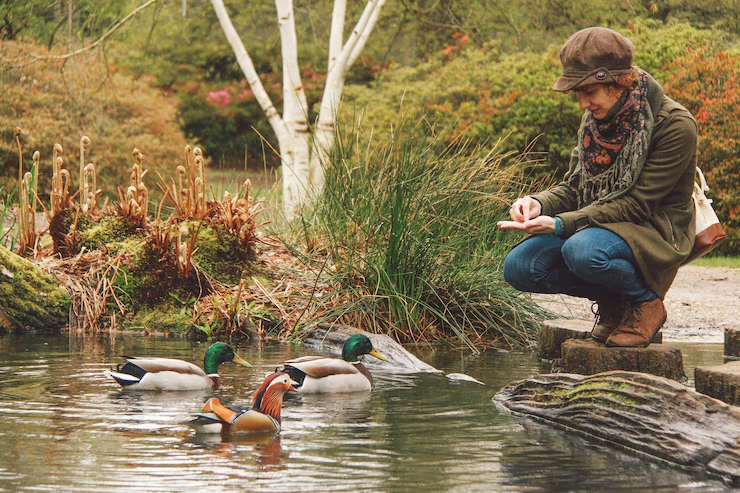🦆 Donald Weaver Duck Decoys: A Legacy Carved in Feathered Wood
The Art of the Decoy
Origins in Nature’s Call
Long before synthetic lures and factory molds, the marshlands echoed with the hush of hand-hewn hope. Hunters carved figures not merely for function, but with a reverence for the wild’s rhythm. Duck decoys were born not in silence, but in soulful dialogue with nature.
Decoys Through the Ages
From Native American traditions to 19th-century waterfowlers, the duck decoy evolved as an unspoken agreement between man and duck: Come closer, trust this illusion. But among all creators, one name rises like mist from a quiet lake—Donald Weaver.
Donald Weaver – The Man Behind the Masterpieces
Humble Beginnings
Born with wood dust in his veins and river fog in his dreams, Donald Weaver did not set out to become a legend. As a young boy in rural America, he carved for joy, for connection, for the music of the knife in soft cedar.
From Whittler to Legend
Time and tide shaped his hands into magic. What began as backyard whittling became a legacy that spread across collectors’ shelves, hunting blinds, and museum walls. He never chased fame—he carved it.
Crafting the Call of the Wild
The Sacred Choice of Wood
To Weaver, the block of wood wasn’t dead matter—it was potential. He chose it like a poet chooses a word: with purpose, weight, and beauty. Cedar, basswood, and tupelo—his sacred trinity.
The Dance of Knife and Grain
Weaver’s knife didn’t cut—it danced. Each slice was a verse, each shaving a song. With every feather detail, he coaxed life into form, crafting decoys so true they made ducks hesitate in flight.
Painting Life into Stillness
His brush? A storyteller. Soft browns, smoky greens, muted silvers—they weren’t colors, they were seasons. Weaver painted with memory, not paint. His decoys wore autumn on their wings.
What Makes Weaver’s Decoys So Coveted?
Soul in Every Stroke
You don’t just see a Donald Weaver decoy—you feel it. The quiet dignity, the pulsing realism, the warmth of something made by hands and heart.
A Blend of Function and Beauty
His decoys float. They lure. But they also perch on mantels, commanding silence. They walk the line between wild tool and gallery grace.
Decoy or Sculpture? The Line Blurs
Is it a bird or a blessing? A hunting tool or homage to flight? Weaver never said. He left the answer in the eyes of the beholder.
Duck Decoys as Living History
From Marsh to Mantel
Weaver’s decoys have been in the mud and in the museum. They’ve called birds and captivated buyers. Each one tells a story, not just of ducks, but of decades.
Storytelling in Plumage and Pose
Tilted heads, outstretched wings, a wary glance—these are not just aesthetic choices. They’re chapters in a book only the marsh can write.
Collectors Speak in Reverence
Testimonials of Awe
“He carved not just ducks,” says one collector, “he carved the air they fly through.” Another whispers, “You can almost hear the wingbeats.”
Auctions and Antiques
Weaver’s decoys, once sold for a handshake, now draw thousands at auction. Yet their true worth isn’t dollars—it’s the hush they bring when unwrapped.
The Emotional Lure of the Decoy
Echoes of Mornings on Misty Water
Each decoy carries the hush of dawn, the splash of paddle, the call of unseen wings. They are time capsules of quiet adventure.
A Grandpa’s Tale in Cedar
For many, a Weaver decoy isn’t just wood—it’s an inheritance. A memory in grain. A grandfather’s voice in lacquer and line.
Donald Weaver’s Influence Today
New Generation Carvers
Many modern carvers cite Weaver as a muse. His methods, his ethic, his devotion—etched into the soul of the craft forever.
His Echo in Modern Wildlife Art
From nature paintings to bronze sculptures, Weaver’s spirit waltzes across mediums—an eternal nod to form, flight, and feeling.
Caring for a Weaver Decoy
Display or Use? The Eternal Debate
Some say float them. Others say frame them. Weaver? He simply smiled. “Let them live where they’re loved,” he once said.
Preserving the Patina of Time
Never polish too hard. Let the dust settle like memory. Each scratch, each chip—part of the tale.
Where to Find Donald Weaver Duck Decoys
Galleries, Shows, and Quiet Corners
Weaver’s work often graces folk art galleries, waterfowl expos, and quiet estate collections. You might even find one in an old friend’s attic.
Online Sanctuaries for Decoy Lovers
Sites like eBay, decoy auctions, and collector forums occasionally feature Weaver’s wonders—but be fast, they vanish like fog at sunrise.
Beyond the Decoy – A Symbol of Stillness
Metaphors Carved in Basswood
To some, Weaver’s ducks represent home. To others, hope. Stillness. Trust. They are not just birds. They are beliefs.
Still Ducks, Moving Hearts
Though carved in stillness, they make hearts fly. That’s Weaver’s true gift—not realism, but reverence.
Conclusion – Feathers That Never Fly Away
Donald Weaver duck decoys are more than just wood and paint. They are memories in motion. Stillness with a heartbeat. Proof that a quiet craft, done with love, can echo louder than thunder. He did not give the ducks wings. He gave them souls.
FAQs
1. Are Donald Weaver duck decoys still being made today?
No, Donald Weaver is no longer carving, but his decoys continue to be sold and cherished across the world.
2. How can I verify the authenticity of a Weaver decoy?
Look for his signature style: natural paint tones, feather-etched detailing, and often a signed or initialed base. Consult experts if in doubt.
3. Can I use a Weaver decoy for hunting?
Technically, yes—but due to their value and artistry, they are better suited for display.
4. What wood did Donald Weaver prefer?
He often used cedar, basswood, and tupelo—lightweight, durable woods perfect for detailed carving and buoyancy.
5. Why are Weaver’s decoys considered valuable?
Their lifelike quality, emotional impact, and craftsmanship have elevated them to fine art status, making them highly prized among collectors.
